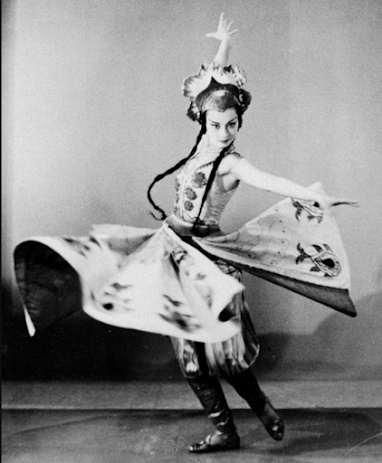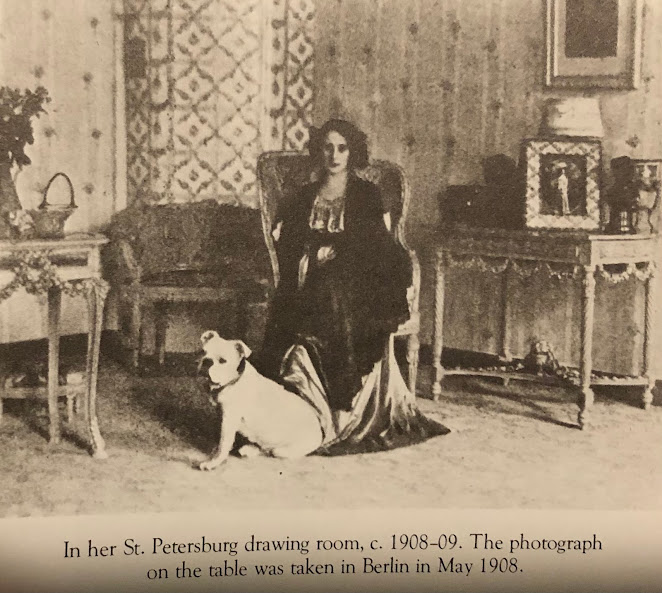Sono Osato
Sono Osato had many roles: ballerina, actress, wife and mother. She was born on August 29, 1919 in Omaha, Nebraska and was of Japanese, Irish and French Canadian descent. Her father was a photographer and her mother wanted to be an actress but it never became a reality. Osato's first ballet memory was seeing a photograph of legendary Prima Ballerina, Anna Pavlova. Sono Osato became bewitched by ballet when her mother took her to see the Diaghilev’s Ballet, Cleopatre. It was something she had never seen before and it was magical to her, after that performance, Sono wanted to take ballet classes.
 |
| Sono Osato from the Original Ballet Russes 1939 |
Sono was so immersed in the ballet Cleopatre, that when she got home from school she acted out what she remembered from the performance. Her siblings helped her create the scenery and stage and Osato danced the steps of the ballet. Whenever Sono was depressed from home life or general school, which she disliked, dancing brought her out of her depression and gave her joy and purpose. She felt free when she danced.
Sono's passion for ballet continued so she asked her parents to allow her take ballet lessons. At a Christmas party, Sono’s mom spoke to her ballet connection, Adolph Bolm. Bolm, was previously from Ballet Russes and danced with Prima Ballerinas Anna Pavlova and Tamara Karsavina. He agreed to take Sono as a student in his studio and It was from there that Osato was brought into the professional world of ballet. She became the pupil of Adolph Bolm and Berenice Holmes in Chicago, 1929.
As Sono learned her dance steps from her ballet classes, her sister Teru, wanted to watch Sono dance. Sono gladly and excitedly performed for her sister but to her dismay, her sister teased her. Sono Osato was so offended that she never performed her student ballet steps in front of her sister again. Ballet was sacred to Sono and she became quite protective of who she allowed to be her audience. Sono’s mother took her to see many ballets, such as Anna Pavlova's dance partner Uday Shankar’s Indian Ballet, when it came to her town.
In 1933 at the age of 14, Osato auditioned for the ballet director of Ballet Russe de Monte Carlo, Colonel Wassily de Basil. He was impressed by Osato’s performance and invited her to join the company. She was the youngest ballerina and the first American ballerina of Japanese descent to ever join Ballet Russes de Monte Carlo. Although she was young, it didn’t mean she couldn’t keep up with the other dancers, because she did keep up and she soon felt like the company was her extended family.
The company’s ballet director Colonel Wassily de Basil, suggested Osato change her name to a Russian name to keep the image of the company that all the dancers were Russian. It was a common thing for a non Russian dancer to change their name to a Russian name. Osato was different; she refused to change her name and explained why. She felt her name didn’t look so different from Sonia or Obidenna, so she found no good reason to change it. Eventually, the company took her words to heart and dismissed the topic. After this, more dancers who were not Russian, would do the same. Sono was different from the other dancers because when she felt something not right, she voiced her opinion. Some felt it wasn't her place to question the company’s sponsors’ politics, but she always voiced her concern when she felt something was wrong. Other dancers, a lot of times, just accepted and bit their tongue, even if they didn’t like it.
Osato went on world tours with the company for 6 years. She left the company when she felt she wanted her dance career to advance more. She returned to America to study at The School of American Ballet in New York City. She then joined the American Ballet Theater in 1940. She danced in Bronislava’s, Beloved, Kenneth Macmilan’s, Sleeping Beauty and Anthony Tudor’s, Pillar of Fire.
When the second war broke out, she Americanized her name in 1941 for a short time taking her mother's maiden name Fitzpatrick on the suggestion of the company. In the same year Sono was hit with devastating news that her Father Shoji Osato was arrested and detained in Chicago under the U.S. government's Japanese American Interment policy in 1941. He was kept there for six months until he was released.
In 1942 Sono Osato was not allowed to leave the country and tour with the ballet company because Japanese Americans were no longer allowed to leave the country. Still despite the cruel discrimination and hardships Sono faced she still persevered and found another love Theater where she could still dance and express herself.
She fell in love with theater, Broadway to be more specific. She became a theater performer and principal dancer in the Broadway plays: One Touch of Venus, On The Town, Ballet Ballads and Peer Gynt. Later, Sono became an actress in a short film, Kissing Bandit with Frank Sinatra, and a television series, The Adventures of Ellery Queen. However, just like Pavlova, she didn’t care for being in the movies and she didn’t like how she appeared on the screen. Her biggest worry was how her dancing looked; this was exactly what bothered Anna Pavlova. Neither dancer liked how the camera filmed their dancing and it never looked right to them.
Sono married Victor Elmaleh in 1943 and when she became the mother of two sons, she left the stage for good. She wrote an autobiography on her life titled, Distant Dances. She founded a Scholarship program in graduate studies for Career transition and financial assistance for dancers that would help former dancers work in careers in the liberal arts and to ease financial burdens of tuition. It is called The Sono Osato Scholarship Program.
In 2016 the Dance Company Thodos in Chicago created a dance production based on her life called Sono’s Journey. Although Sono left the stage, she continued to give back to the ballet community which brought her so many opportunities throughout her life. She gave hopes and dreams to so many dancers. She was the American Dream.
 |
| Sono Osato & Marian Ladre 1939 Ballet Russes |



Comments
Post a Comment